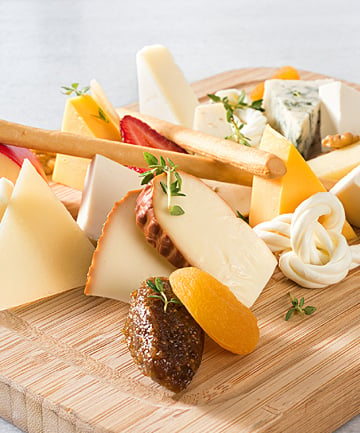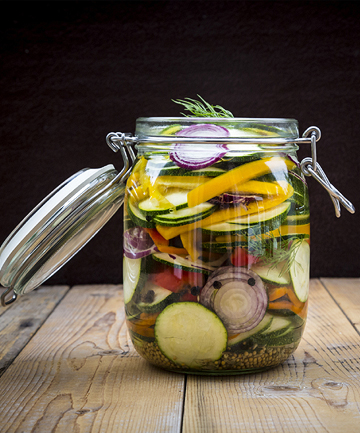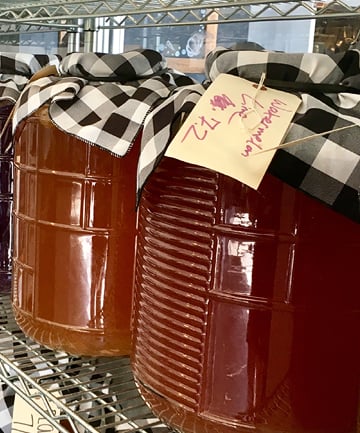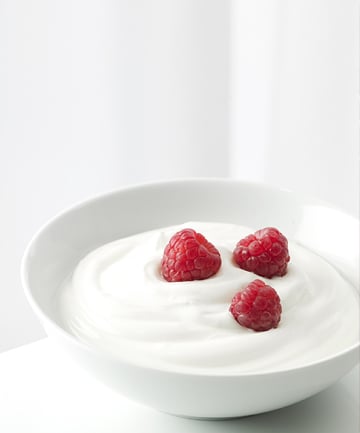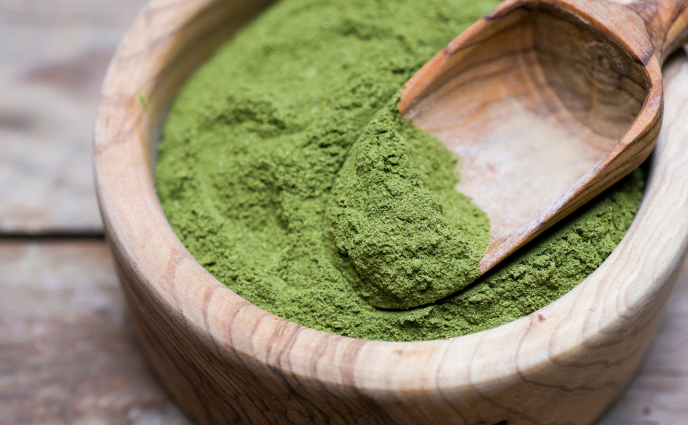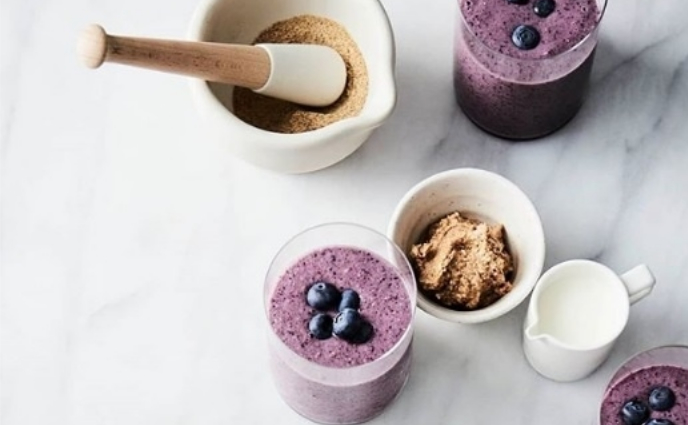"Fermented cheeses like swiss, gouda, parmesan, and cheddar are made using lactic acid bacteria, which means the milk ferments over time to form curds and probiotics," explains dietician Pat Perotti, RD, LD. Fermented cheeses are fairly easy to incorporate into your diet, she explains, as you can eat them as a snack with some fruit.
Image via BURCU ATALAY TANKUT/Moment/Getty
"Miso is a fermented soybean paste that can be added to Japanese soups, stews, and stir-fries," says Perotti. And since miso paste is fermented, she explains that it promotes the growth of probiotics.
Image via Westend61/Getty
"Produce your own in-house probiotics with home pickling," says registered dietitian Monica Auslander Moreno, MS, RD, LD/N, founder of Essence Nutrition. According to her, you'll need a sterile mason jar, some veggies, white vinegar, salt, some sugar, and any spices or herbs for flavor. She also adds that you can even pickle cut lemons and then eat the skin. Yum!
Image via Westend61/Getty
"I often recommend store-bought kombucha because it is rich in probiotics and is widely available," says registered dietitian, Molly Kimball, RD, CSSD. However, she points out that ingredients and sugar content are variable in store-bought brands, making it important to carefully read the ingredient panels. She also advises choosing a non-pasteurized brand like Big Easy Bucha, which is only has eight grams of sugar (or less) per 16-ounce bottle.
Image via photo by Pam Susemiehl/Moment/Getty
"Yogurt is filled with probiotics and contains live cultures," says registered dietitian nutritionist Lee Cotton, RDN. Yogurt can be added to smoothies, morning oatmeal, or can be eaten with fruit, she explains — though, as with kombucha, it's important to read the nutrition label and watch for sugar content.
Image via Will Woods/DigitalVision/Getty


